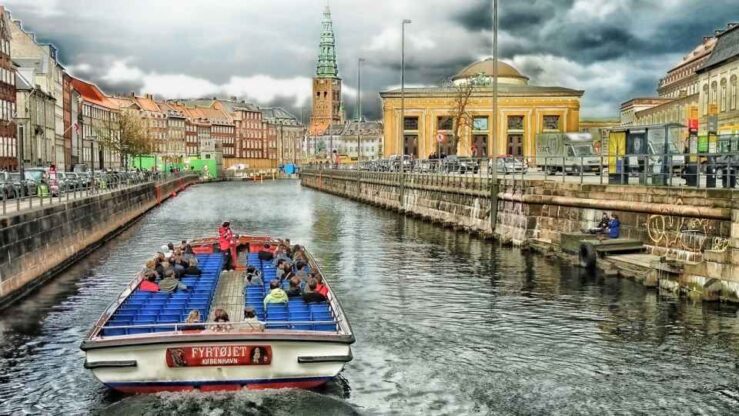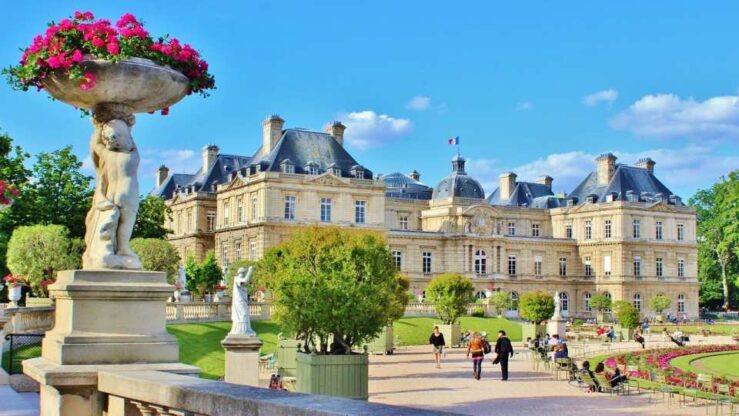9 Cultural Spots to Visit in Aarhus, Denmark
1. Aarhus Ø – The Docklands
2. Dokk1
3. ARoS
4. The Old Town
5. Moesgaard Museum
6. The Viking Museum
7. Aarhus University Campus
8. Marselisborg Palace Park
9. The Infinite Bridge
Aarhus is the second largest city in Denmark, sometimes described as the “world’s smallest metropolis”. Set at a river mouth, the location chosen for Aros by the first Viking settlers, it has, throughout history, developed into a modern city, with the river and the sea contributing to its unique character.
Visiting Aarhus, you will soon realise that the city, with its unpretentious ambience, has a lot to offer. Being in a university city, the atmosphere is young and lively, and the students add a welcome dynamic diversity to the cultural life. Whether you are looking for urban architecture, historic locations, phenomenal art, or local culture, you will find it here in Aarhus, Denmark.
One of the newest parts of Aarhus is Aarhus Ø, situated at the easternmost point of Aarhus (Ø is short for øst, the Danish word for east), which is the result of an innovative expansion of the harbour. A transformation of Aarhus Docklands has created a new urban space with a wide variety of facilities right at the waterfront. It is now one of the hippest quarters in Aarhus, a part of the city, with an exceptionally central location and an architectural uniqueness.
Aarhus Ø either has everything – or is close to everything: vibrant cafés and restaurants, hotels, workplaces, boutiques, peculiar apartment blocks, and attractive public sites such as the food market Aarhus Street Food and other creative urban projects around. One of the eye-catching structures at the Docklands is the Iceberg, a characteristic iceberg-shaped residential complex in shades of white and cool sea blue.
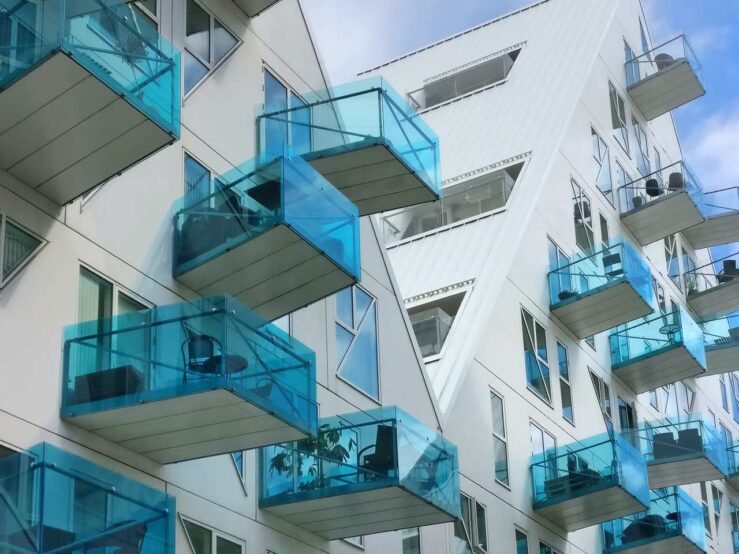
The Iceberg, Aarhus Ø | Photo: Sprichbeidl / Pixabay
The proximity to the sea justifies recreative activities such as a dip in the Harbour Bath, designed by the famous Danish architect Bjarke Ingels. A promenade deck, a rectangular 50-metre-long swimming pool, a circular diving pool, children’s pools, and two saunas offer the 4,000 Docklands citizens the opportunity to chill here on a hot summer day.
Other important structures include the Navitas Science and Innovation, the Canal Houses, the Warehouses, the Harbour Islet and Dokk1. The area is under construction, and not all projected buildings have been completed yet.
The Docklands can house around 12,000 residents and be the location of 10,000 workplaces – making it one of Europe’s most ambitious waterfront construction projects!
Dokk1 or Dokken is a top-notch cultural centre and public library located at the waterfront in the city centre next to the old Aarhus Custom House, designed by Hack Kampmann in 1998. Hence the name of the square: Hack Kampmanns Plads.
With a giant glass prism providing excellent views of the city and the harbour, the structure is designed in a neo-futuristic architectural style. A heptagonal metal disc above the prism holds the administration offices.
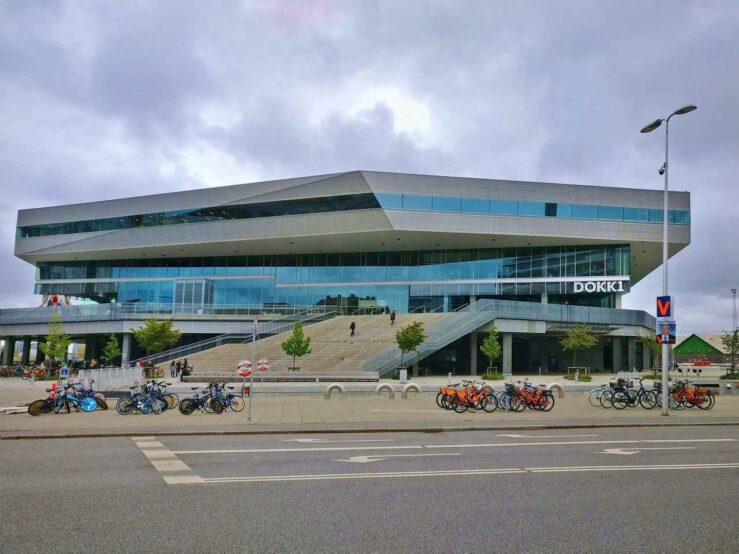
Dokk1 in Aarhus, Denmark | Photo: Sprichbeidl / Pixabay
The development of the cultural centre was part of the Urban Mediaspace Aarhus project, financed by Aarhus Municipality and Realdania, and designed by Schmidt Hammer Lassen Architects and the Danish landscape architect Kristine Jensen. Sustainability, recyclable materials, and low energy consumption have been the main focus of the project. The building was inaugurated in 2015.
In addition to the public library function, the building includes theatres, municipal public service, business facilities, underground parking with an automated lift system and integration into the light rail system.
3-day itinerary for Copenhagen
9 cultural spots in Copenhagen
One of the remarkable features inside the building is the large bronze pipe bell, designed by Kirstine Roepstorff. It is connected to Aarhus University Hospital, and each time a child is delivered there, the parents can choose to push a button to activate the bell!
Children are also well accommodated at Dokk1. On the outside deck, a four-section playground, Kloden (The Globe), offers the opportunity to play in various world regions. There is a jungle (Africa), an Asian dragon (Asia), a bear (Eastern Europe), ‘ice’ (the Arctic), a gigantic wooden eagle (America) and a volcano (Iceland).
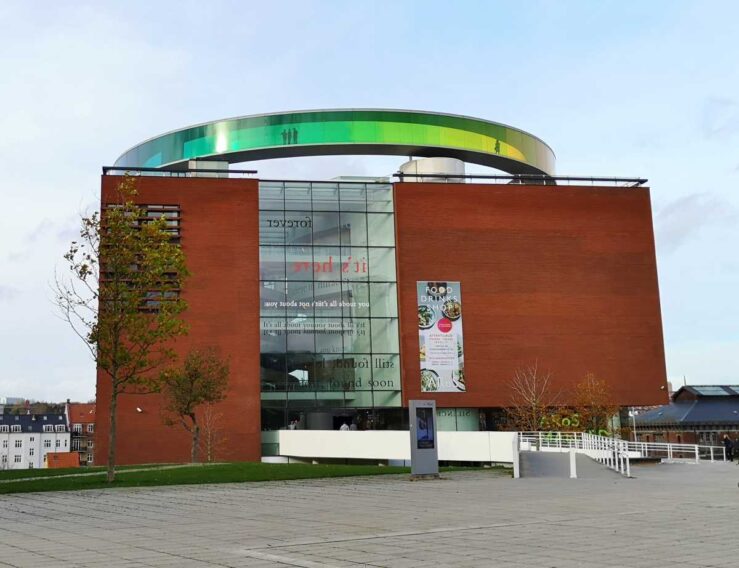
The Aros Museum | Photo: Travel In Culture
ARoS in Aarhus is among the largest and most significant art museums both in Denmark and in Northern Europe. Set in inspiring surroundings, the exhibitions are intended as spaces for social interaction and innovative approaches to broaden the mind and perceive the world in new ways through art. Encouraging ‘experience, insight and reflection’ is part of the vision.
The museum houses a notable collection of Danish eighteenth and nineteenth-century paintings (the Danish ‘Golden Age’), among others, artists such as N.A. Abildgaard, Christoffer Wilhelm Eckersberg, Christen Købke, Johan Th. Lundbye, Martinus C. W. Rørbye, Wilhelm Marstrand, P. C. Skovgaard, Vilhelm Hammershoi, P. S. Krøyer and J. F. Willumsen are represented.
More recent works include masterpieces by Olaf Rude, Jens Søndergaard and Oluf Høst, as well as abstract art and sculptures by Robert Jacobsen, Asger Jorn, Bjørn Nørgaard and Per Kirkeby. You will find striking examples of fascinating avant-garde CoBrA art in the museum.
One of the real draws is ‘Your rainbow panorama’ by the Danish/Icelandic artist, Olafur Eliasson, on the museum roof. The exhibition floors are topped off with a colourful rainbow installation, allowing walking inside and experiencing 360-degree panoramic city views in various shades of green, yellow and red. The iconic rainbow can be seen from many places in the city and has become a landmark of Aarhus. You can also enjoy the view from the restaurant ARoS WINE & FOOD HALL atop the building.
In addition to being an art gallery, ARoS is occasionally a venue for special events and meetings.
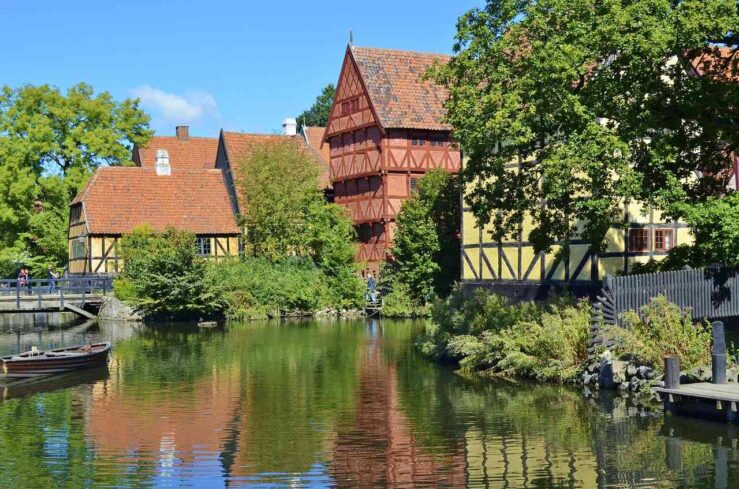
The Old Town | Photo: Nils Nyvang / Pixabay
The Old Town or Den Gamle By in Aarhus is an open-air museum, which will take you back in history to different periods in Denmark.
You will be taken centuries back to Hans Christian Andersen’s time when people used horse-drawn carriages in the cobblestone streets. In the museum area, you will experience historical half-timbered houses from all over Denmark, dating from the 1500s to the late 1800s.
The baker still sells delicious Danish pastries based on recipes from the late 1800s! You can enter any house which has an open door. Don’t miss a visit to an ordinary family’s middle-class home, a visit to the Mayor’s House boasting a well-preserved Renaissance merchant building from the Danish Renaissance, or a visit to the Mintmaster’s Mansion being an upper-class home from the 1700s with Baroque and Rococo decorations.
Another part of the Old Town shows urban life around the time of industrialisation in Denmark. Nye phenomena such as electric street lights, telephone wires and cars appear in the streets. An authentic motor car dealer features vintage cars from the period. There is a whole 1920’s neighbourhood which gives a fascinating insight into the new life and businesses emerging with all the inventions.
There are several museums inside The Old Town, such as the Danish Poster Museum, the Toy Museum, the Musaeum of prehistoric artefacts and local history, as well as the fascinating Aarhus Story featuring a journey through 1200 years of history in Aarhus from the Viking settlement onwards.
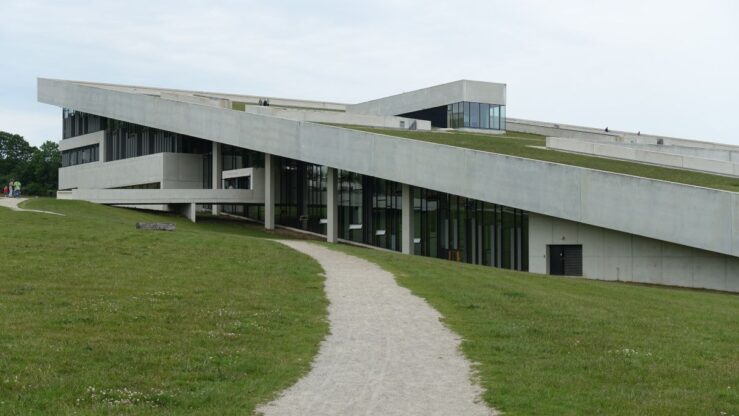
Moesgaard Museum | Photo: Travel In Culture
Built into the green hills in the south of Aarhus, surrounded by forests and the sea, Moesgaard Museum is the place to seek insight into the past in Denmark. The enticing museum is set in the landscape where the first Vikings arrived in the 8th century and developed a settlement at the ‘mouth of the river’ known as Aros. It tells the story of the Viking Age in the area and displays runic stones, bog bodies and other archaeological finds excavated around old Aros.
You can also explore Oldtidsstien, a prehistoric trail across the landscape formed during the Ice Age, featuring reconstructions of houses from the past, such as a Viking stave church and a medieval water mill. Just off Oldtidsstien, you will locate one of the attractive Aarhus beaches, Moesgaard Strand, often bustling with people.
The museum building is the result of a renewal in 2013, which replaced the old manor museum. A new structure was dug into the sloping hills, designed by Henning Larsen Architects. It is a remarkable design, where the museum roof is the rising lawn sloping down into the surrounding scenic meadows.
Moesgaard Museum is, with its permanent and temporary exhibitions and engaging venues, a favoured place for locals and visitors. Several times, outdoor plays have taken place here – for example, a Viking play about the Viking king Harald Bluetooth, ‘Røde Orm’ in 2017, ‘King Arthur’ in 2019, ‘The Hobbit’ in 2022, and ‘Ragnarok’ in 2024. It is also the perfect setting for other Viking events, such as the annual Moesgaard Viking Moot, which has existed since 1977. 500 authentically dressed Vikings gather here every year in July, where the event culminates with a giant battle!
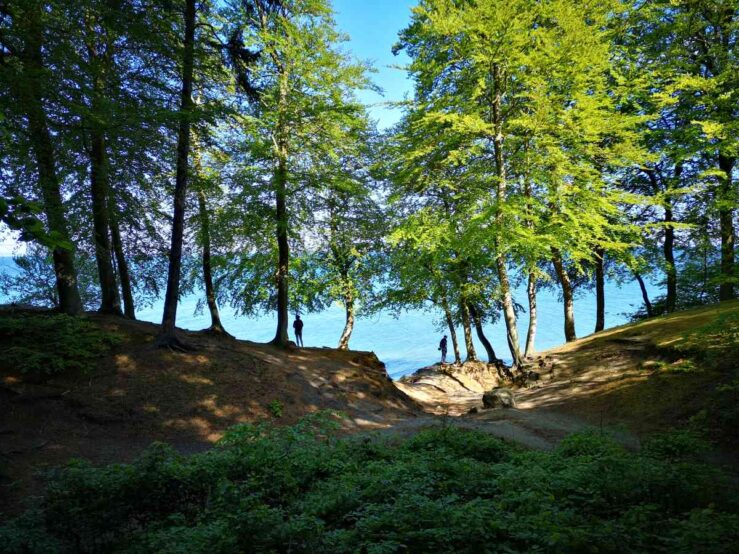
The Marselisborg Forests | Photo: Travel In Culture
The other great Viking museum in Aarhus is Vikingemuseet, located right in the city centre in the basement of the Nordea Bank at Skt. Clemens Torv.
Down here, the existence of the old Viking Aros is revealed, including remains of the old ramparts at the time of Harold Bluetooth’s rule. Rare artefacts uncovered here are on display, and you will get insight into their Viking homes, the structure and layout of old Aros, and life in the year 980 based on the traces that the Vikings have left. Moreover, you can experience a close-to-authentic Viking attack!
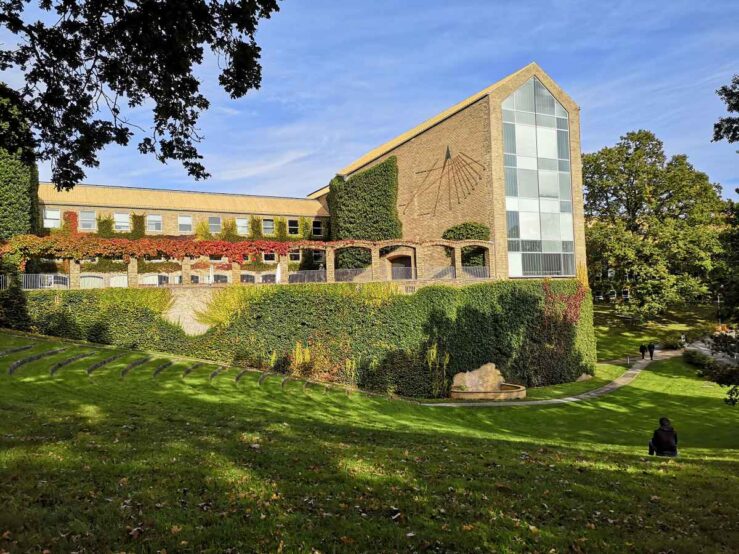
Aarhus University | Photo: Travel In Culture
The yellow brick buildings, housing both auditoria, laboratories, administration, museums and student dorms, have over time become a landmark of Aarhus.
Aarhus University was designed by the Danish architect C. F. Møller. Founded in Aarhus in 1928 with only 78 students, it is the second-oldest university in Denmark! Arts got its building in 1933, and in 1936, an Economics and Law faculty saw the light of day, followed by Theology in 1942 and Science in 1954.
Today, Aarhus University has five faculties: Arts, Natural Sciences, Technical Sciences, Health, and Business and Social Sciences. Aarhus University ranks among the top 100 universities by several significant rankings and has an excellent international reputation. It is part of the Coimbra Group and the Utrecht Network.
Not only is Aarhus University internationally highly recognised for its educational activities and phenomenal research results, but it is also famed for its spectacular architecture and the scenic beauty of the university campus. It has been appointed among the most beautiful universities in the world by the Huffington Post. Its location in park-like surroundings with a lake in the middle of the green, sloped landscape attracts thousands of students and researchers from all over the world.
Several museums belong to Aarhus University, among others the Botanical Garden and Tropical Houses, the Ole Rømer Observatory, the Museum of Natural History, the Steno Museum and the Museum of Ancient Art – the last three can all be found on campus.
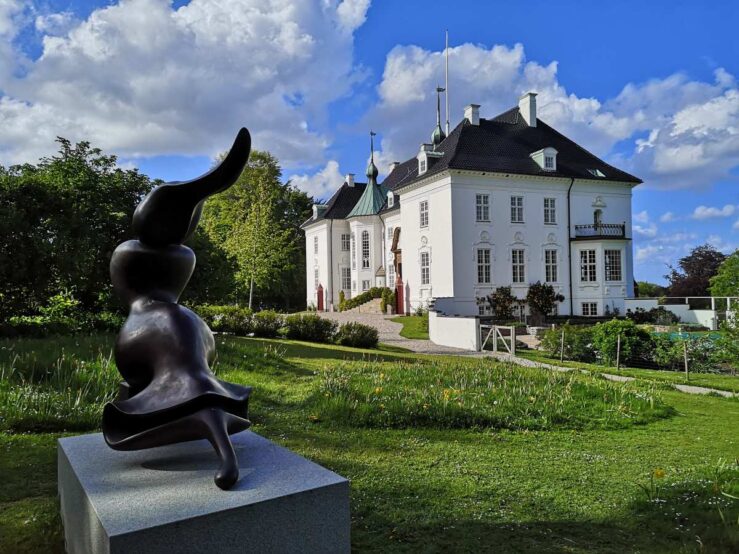
Marselisborg Castle | Photo: Travel In Culture
Set in beautiful surroundings between the Marselisborg Forests, Mindeparken (the Memorial Park), the Deer Park and the sea, Marselisborg Palace, or Marselisborg Slot, is the treasured summer residence of the Danish royal family.
Marselisborg Palace was built in 1899-1902, designed by the architect Hack Kampmann, on the premises of the old Marselisborg Manor. It was a gift from the people to the royal family on the occasion of King Christian X’s and Queen Alexandrine’s wedding.
The Palace Park, Slotshaven, is a lovely park designed by architect L. Christian Diedrichsen in a typical English landscape style. It is open to the public when the royal family is not in residence, whereas the Palace is private. The park and gardens feature a picturesque pond, intriguing art sculptures, a picturesque rose garden, and a lush herb garden.
Changing of the guard takes place at noon when the royal family stays in Aarhus.
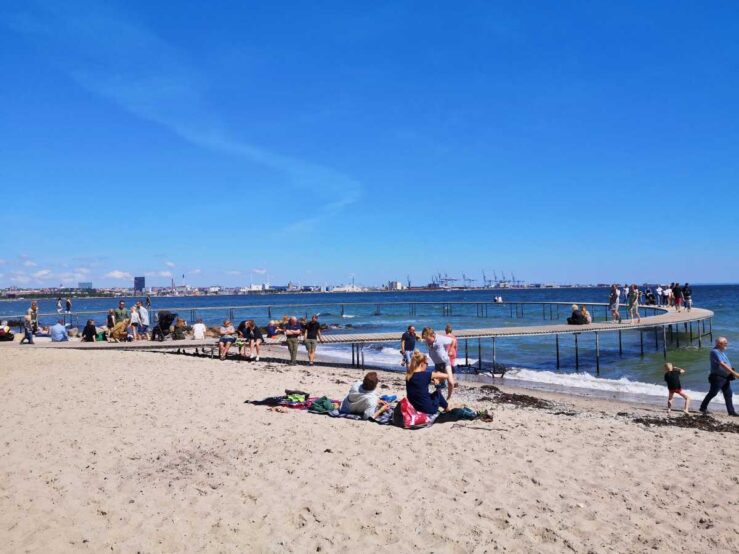
The Infinite Bridge | Photo: Travel In Culture
Created for the Sculpture by the Sea event in 2015, the unusual circular bridge has survived during the summer months as a permanent work of art for everyone to use. Set at the Varna Beach just off Ørneredevej, The Infinite Bridge, or in Danish Den Uendelige Bro, is an unconventional wooden pier for the infinite stroll! Enjoy the views of the sea, the forest, the city, and the harbour as you walk around it.
When the Sculpture by the Sea was over in 2015, the bizarre bridge, designed by Niels Povlsgaard and Johan Gjødes, was at first dismantled as planned. However, there was an outcry, and soon after, the phenomenal bridge was reconstructed.
Starting at The Infinite Bridge, you can have a lovely walk along the various small beaches past the Marselisborg Forests towards Moesgaard Museum in southern Aarhus.
Read more about the Vikings in Aarhus: Danish Viking Kings at Moesgaard Museum
Read next: Visit Hisoric Ribe in Denmark and Hiking the old Towpath Pramdragerstien
9 Cultural Places to Visit in Aarhus Denmark
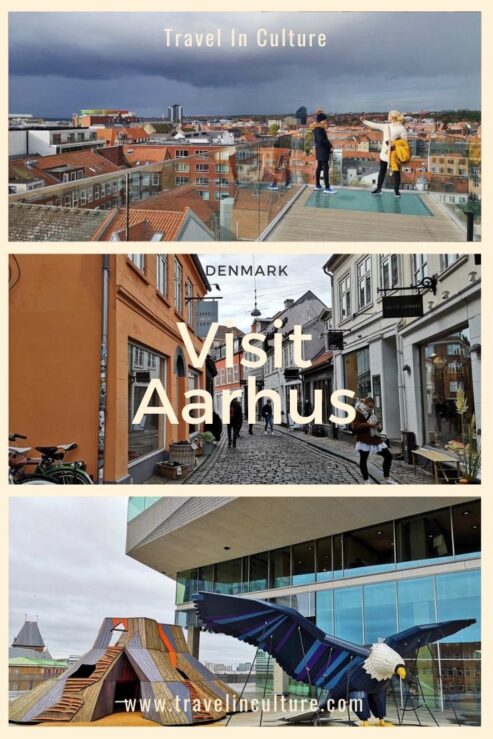
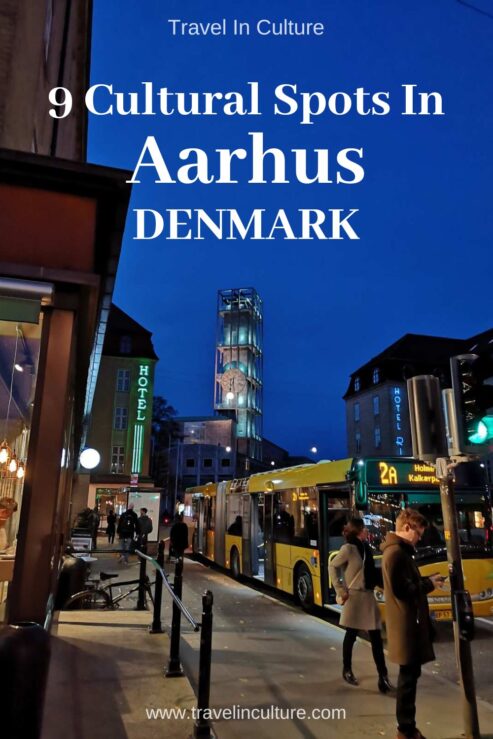
Visit Aarhus, Denmark
Featured image of
9 Cultural Spots to Visit in Aarhus, Denmark:
Travel In Culture




